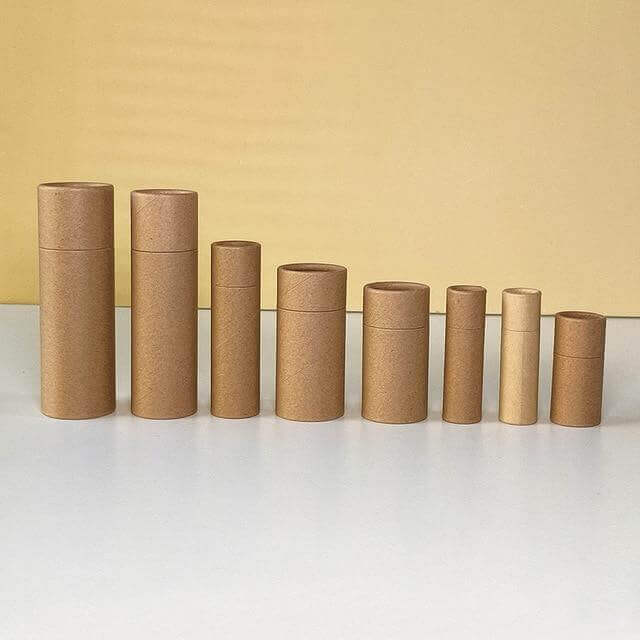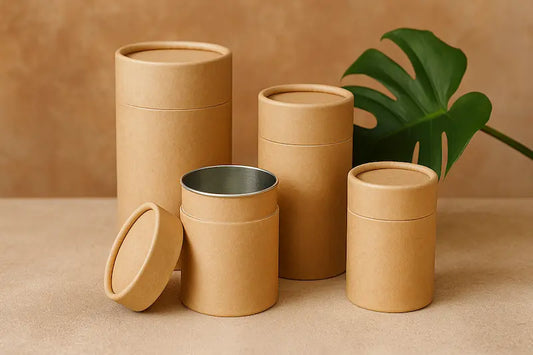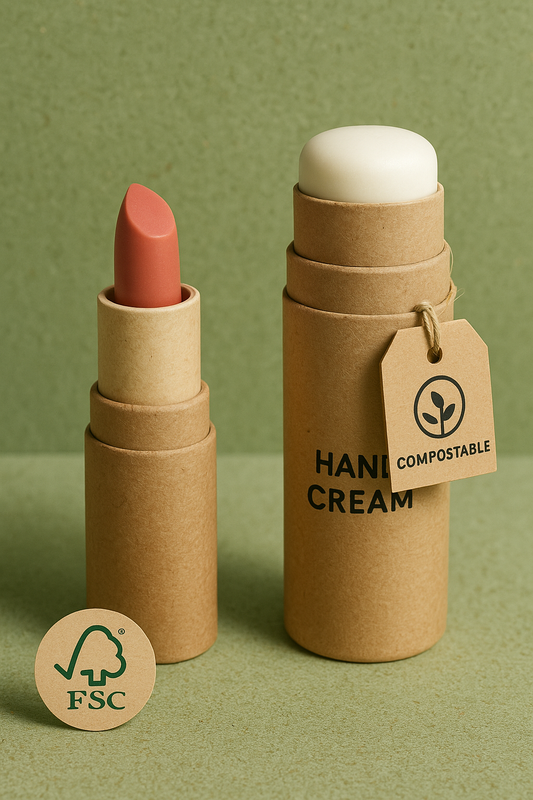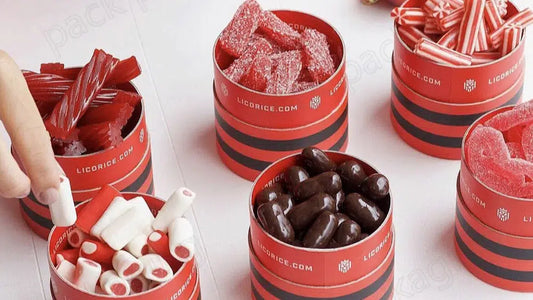paper tube: your recommend option for paper food packaging
Compartir
What material is used for food packaging?
Food packaging is essential for preserving the quality, safety, and shelf life of food products. It involves the use of various materials, each chosen based on the specific requirements of the food being packaged and the desired properties of the packaging itself. Here’s an overview of the materials commonly used for food packaging:
- Plastic: Plastic is one of the most versatile materials used in food packaging due to its flexibility, durability, and cost-effectiveness.
- Metal: Metals such as aluminum and steel are commonly used for packaging beverages, canned foods, and certain types of snacks.
- Glass: Glass is primarily used for packaging beverages, sauces, condiments, and specialty foods.
- Paper and Cardboard: Paper and cardboard are widely used for food packaging, particularly for dry and lightweight products such as cereals, snacks, and bakery items.
Plastic can be molded into different shapes and sizes, making it suitable for a wide range of food products. Metal is highly durable and provides protection against physical damage. Glass is impermeable to gases and liquids, making it ideal for preserving flavor and freshness. The question arises: is paper food packaging safe? The answer is definitely YES.
Is paper food packaging safe?
Paper food packaging can be considered safe when designed and manufactured appropriately. Paper and cardboard are commonly used for food packaging, especially for dry and lightweight products like cereals, snacks, and bakery items. Here are key points to consider regarding the safety of paper food packaging:
- Material Composition: Paper used for food packaging is typically made from natural fibers derived from wood pulp or recycled paper. It is generally considered safe as long as it meets food safety regulations.
- Coatings and Treatments: To enhance their functionality, paper and cardboard food packaging may be coated or treated with substances like polyethylene (PE) or polypropylene (PP). These coatings improve barrier properties, making the packaging resistant to moisture and grease.
- Regulatory Compliance: In many countries, food packaging materials, including paper, must comply with stringent regulations to ensure they do not pose any health risks. Regulatory bodies like the FDA in the United States and EFSA in Europe set standards for materials that come into contact with food.
- Migration of Substances: It's essential to ensure that inks, adhesives, and coatings used in paper packaging do not migrate into the food and remain within safe limits established by regulatory authorities.
- Environmental Considerations: Paper is often chosen for food packaging because it is biodegradable and recyclable, making it a more environmentally friendly option compared to some plastics.
- Suitability for Different Foods: Paper packaging is suitable for a variety of dry and lightweight food products. However, it may not be suitable for foods that are very moist or oily without appropriate barrier coatings.
Why is paper a good packaging material?
Paper is a special material for food packaging due to several key advantages. Firstly, paper offers versatility in packaging design and customization. It can be easily molded, folded, or shaped to accommodate various food product types and sizes, providing flexibility in packaging solutions. Additionally, advancements in paper technology have led to the development of specialized coatings and treatments that enhance its barrier properties against moisture, grease, and gases. These coatings ensure food freshness and safety, making paper suitable for a wide range of food applications, from dry goods to bakery items.
Secondly, paper's natural properties contribute to food safety by being inherently non-reactive and free from chemicals that could leach into food. This makes it a trusted choice for consumers concerned about potential health risks associated with other packaging materials.
Moreover, it is biodegradable and recyclable, making it an environmentally sustainable choice compared to many plastics. Its ability to decompose naturally reduces long-term environmental impact, appealing to consumers and businesses alike focused on sustainability. Overall, the combination of sustainability, versatility, and safety makes paper an excellent packaging material for food, aligning with modern demands for both environmental responsibility and food quality assurance.
What are the disadvantages of paper food packaging?
While paper food packaging offers many advantages, it also comes with several disadvantages that need consideration.
One significant drawback is its susceptibility to moisture and grease. Unlike plastics or metals, paper can absorb moisture and oils from food, potentially compromising the integrity of the packaging and affecting the quality of the product inside. This limits its suitability for packaging items with high moisture content or those prone to oil leakage.
Another challenge is its relatively lower barrier properties compared to materials like plastics or aluminum. Although modern advancements have introduced coatings and laminates to improve barrier strength, these enhancements may not always match the level of protection provided by other materials. This can impact the shelf life and freshness of certain food products, particularly those requiring extended preservation periods.
Additionally, the structural integrity of paper packaging may weaken over time, especially if exposed to fluctuating environmental conditions such as humidity or temperature extremes. This can lead to potential damage during transportation and handling, affecting product presentation and consumer perception.
Lastly, while paper is biodegradable and recyclable, its production can still have environmental impacts, such as deforestation and energy consumption. Balancing these factors with its benefits is crucial when considering paper as a packaging option.
Food grade paper tube packaging wholesale
In view of the advantages and disadvantages of paper materials discussed above, I recommend paper tube packaging as a viable option. Paper tube packaging combines several benefits of traditional paper packaging while mitigating some of its drawbacks.
Like other paper packaging, paper tubes are biodegradable and recyclable, aligning with sustainable practices. They have a lower environmental footprint compared to many other packaging materials. And paper tubes can be customized in terms of size, shape, and design, offering flexibility to suit different food products. They are particularly suitable for dry goods like snacks, powdered substances, and even some liquids when properly lined. What is more, modern paper tube designs can incorporate specialized liners or coatings to enhance barrier properties against moisture, grease, and oxygen. This improves product freshness and shelf life, addressing a common limitation of standard paper packaging.
Disadvantages Addressed:
Moisture Resistance: By utilizing appropriate liners or coatings, paper tubes can better resist moisture and oil absorption compared to traditional paper packaging. This makes them suitable for a wider range of food products, including those with higher moisture content.
Structural Integrity: The cylindrical shape of paper tubes inherently provides better structural integrity compared to flat paper packaging. This reduces the risk of damage during transportation and handling, ensuring product protection and presentation.
In conclusion, paper tube packaging represents a balanced choice that leverages the sustainability and customization advantages of paper while addressing some of its inherent limitations. Plus it offers a unique and aesthetically pleasing packaging option that can enhance product visibility and appeal on store shelves, potentially increasing consumer interest and sales. It is a recommended option for brands looking to align with environmental goals while maintaining product quality and consumer appeal.




